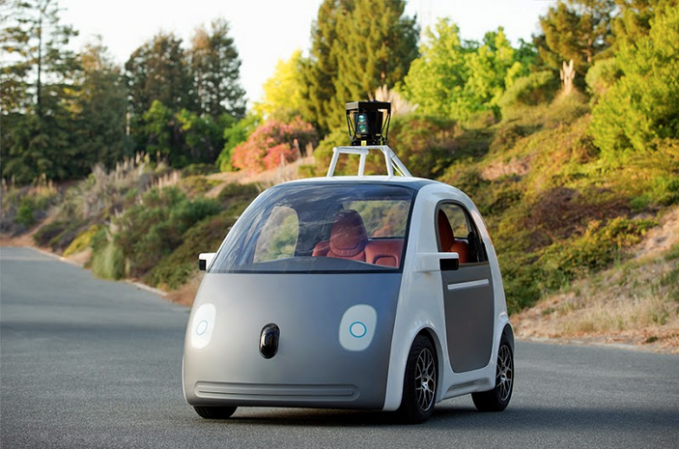Google has been working on self-driving cars for a few years now — but up until recently, they were mostly modifying the heck out of existing cars, not building a vehicle from the ground up.
Back in May, they released a mockup of what they expected their first built-in-house vehicle to look like. Today, they’ve released a photo of the real deal.
Here was its original early mockup, from May:

As you might notice, the final product ended up looking pretty darn similar to the early shots. While the vehicle still looks a bit like something out of a Richard Scarry book, some tweaks have been made. For example:
It has headlights now, which is a good thing. Even if a self-driving car can see other cars without headlights (thanks, RADAR!), that doesn’t mean other (non-self driving) cars can see you.
They’ve tweaked the front grill a bit, adding reflector dots and generally making it look a bit less like this emoticon: .
The hardware on top of the car (a camera/radar rig that spins at a few thousand RPMs and plays a huge part in giving the car its vision) has been slimmed down and packed into a fun little bubble (albeit one that looks a bit like a 70s police car siren)
Remember, we’re still a ways out from any mere mortals being able to walk in and buy a self-driving car. While things like self-parking and lane-maintenance are somewhat straight forward, a car that can navigate public city streets on its own still has a few huge obstacles to steer around. Things like rain, a dependance on incredibly detailed 3D scans of streets, and the mountain of legislation that’ll have to be worked out as these things grow in popularity.
Google says its custom semi-sentient whip should be hitting its private test tracks over the holiday break and might start popping up around Northern Californian streets in 2015
Comments
Post a Comment